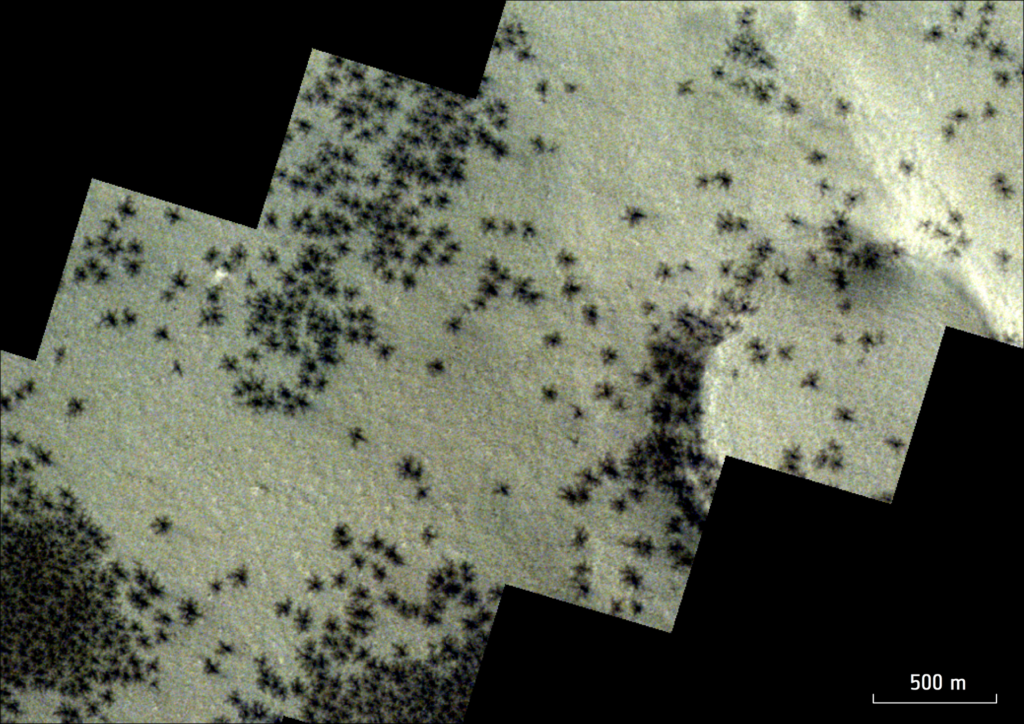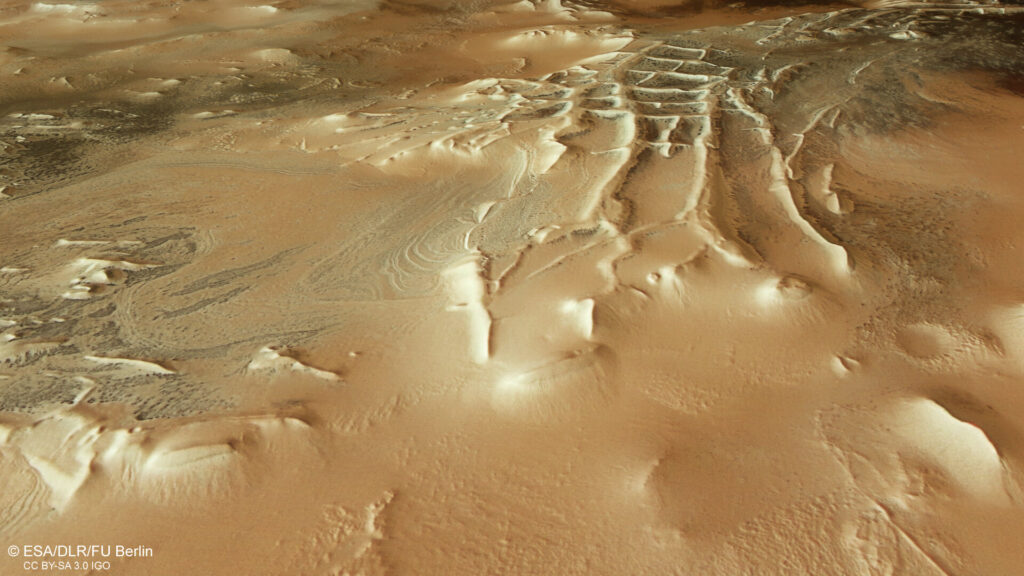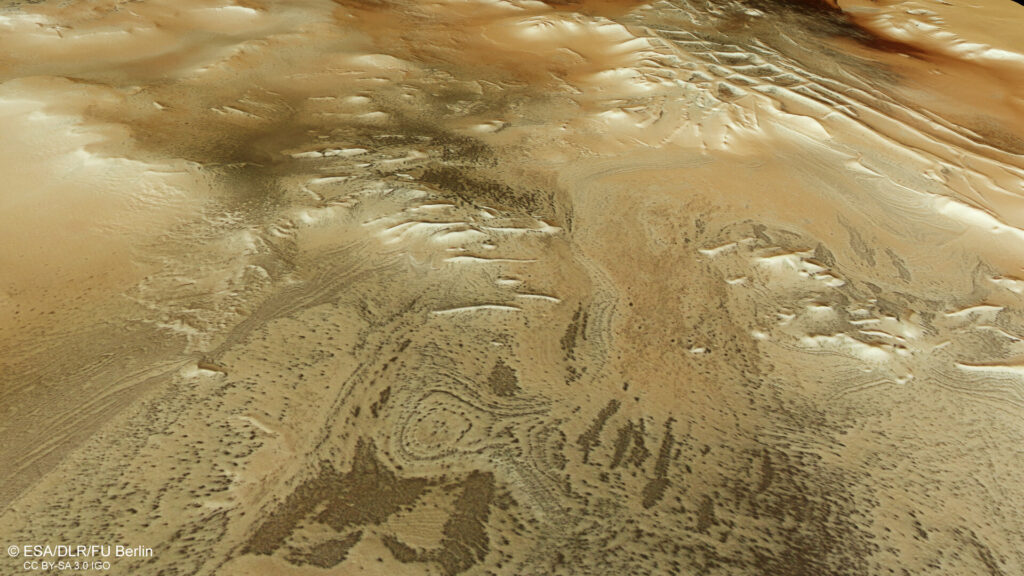The European Space Agency has published a series of images taken by the Mars Express and TGO spacecraft. They show dark objects on the surface of Mars that resemble spiders.

Martian “spiders” are associated with the climate of the Red Planet. In winter, part of the carbon dioxide from the planet’s atmosphere freezes out, forming accumulations of dry ice. When the Sun begins to illuminate these deposits with the arrival of spring, the carbon dioxide ice in their lower part begins to turn into gas. It accumulates and then breaks through the layers of overlying ice, tearing free.
During this process, the escaping gas carries the dark material with it. It bursts upward through cracks in the ice in the form of tall fountains or geysers, and then falls down and settles on the surface. As a result, dark spots from 45 m to 1 km across are formed. The same process creates characteristic “spider-like” patterns on the surface.
The images taken by the Mars Express and TGO spacecraft demonstrate similar formations formed by escaping gas and ejected matter. Most of them are located in the area known as Inca City.

Inca City was discovered by the Mariner 9 probe in 1972. The reason for this name is simple. Inca City is a linear, almost geometrically regular network of ridges that resembles the ruins of an ancient city. Scientists still do not know exactly how it was formed. According to one version, the sand dunes eventually turned into stone. According to another, material, such as magma or sand, seeps through cracks in the Martian rock in this place. It is also possible that they are of glacial origin.

The “walls” of Inca City seem to be part of a large circle with a diameter of 86 km. Scientists assume that it is located in a large crater. The impact that gave rise to it apparently created faults in the surrounding plain, which were then filled with rising lava and eventually disappeared.
Earlier, we talked about a new hypothesis explaining the origin of Martian methane.
According to https://www.esa.int
Follow us on Twitter to get the most interesting space news in time
https://twitter.com/ust_magazine


